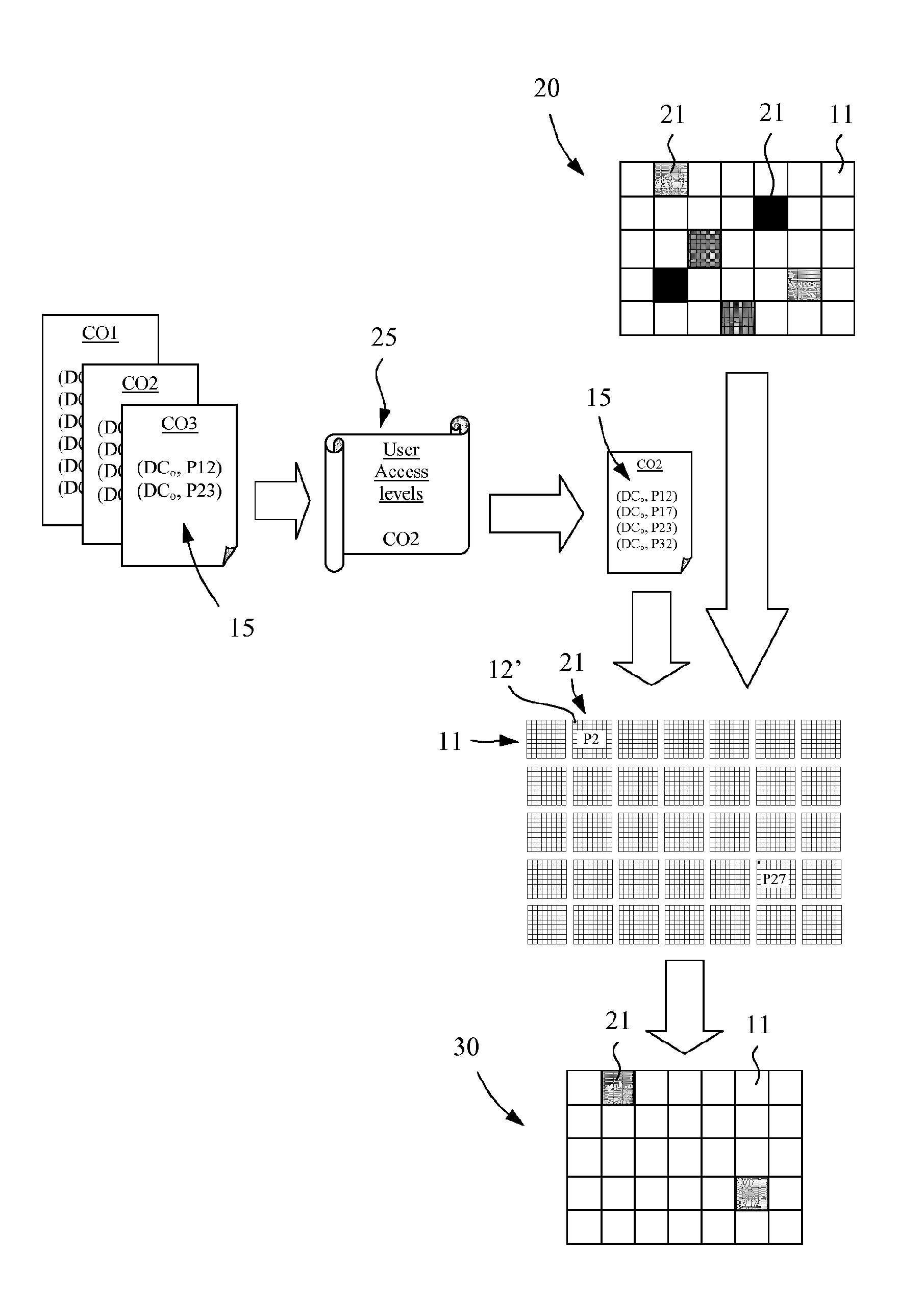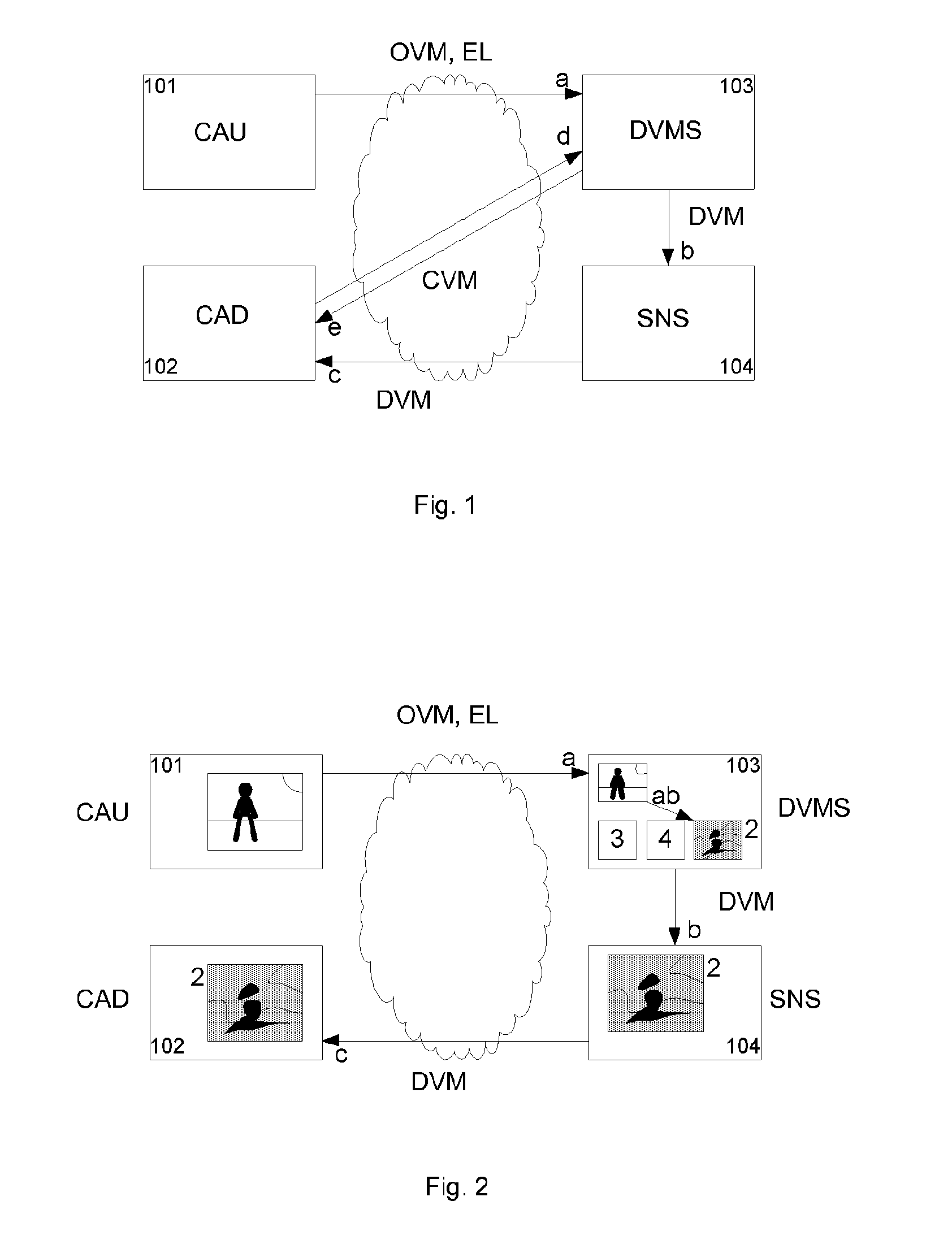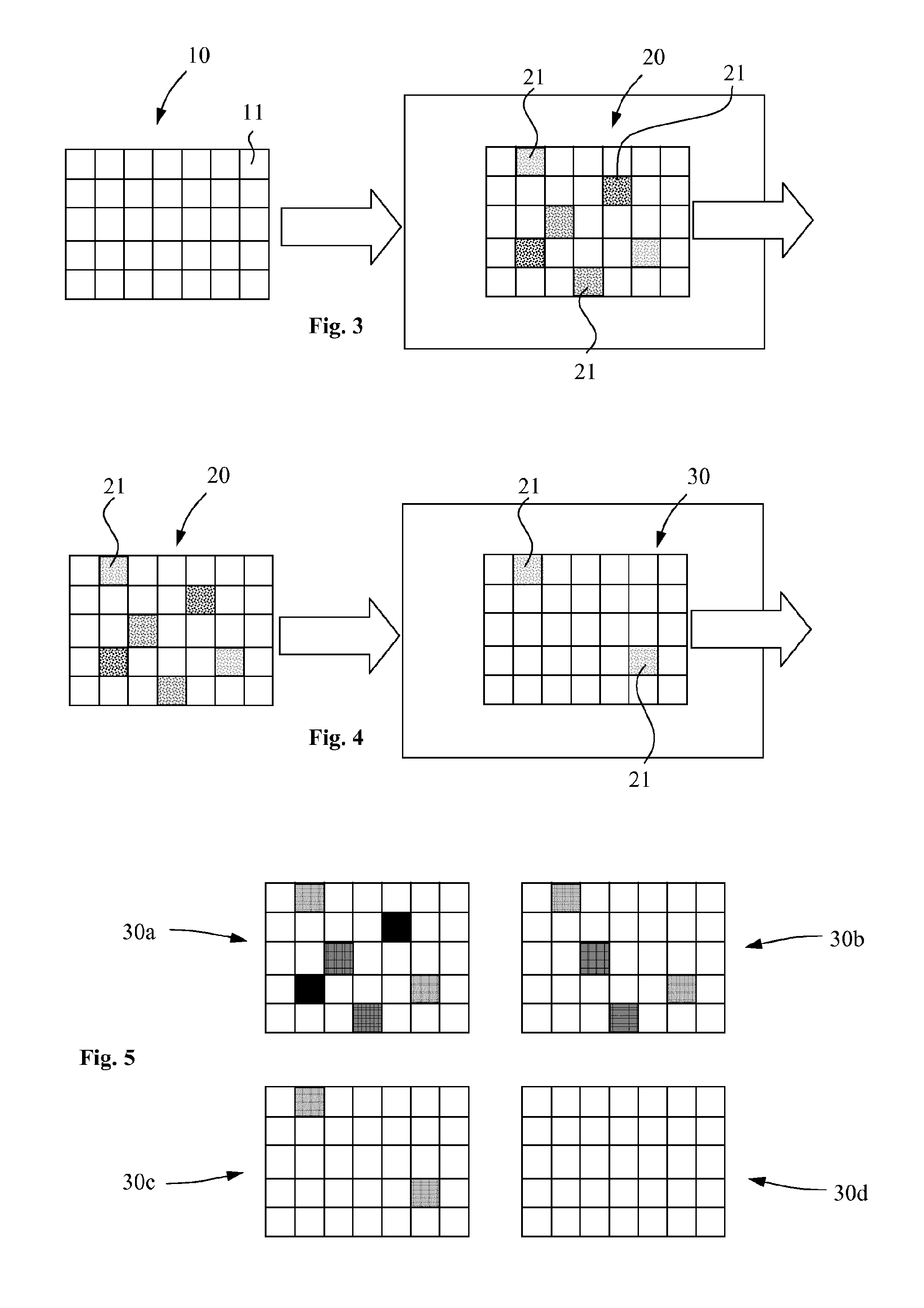Method for controlling access to visual media in a social network
a social network and access control technology, applied in the field of access control of visual media, can solve the problems of cumbersome operation, detrimental to the privacy of users, and providers that do not effectively protect assets from being distributed unintentionally
- Summary
- Abstract
- Description
- Claims
- Application Information
AI Technical Summary
Benefits of technology
Problems solved by technology
Method used
Image
Examples
first embodiment
[0072] the original visual medium is distorted by the distorted visual medium server (DVMS) in such a way to obtain a number of degraded visual media according to the number of levels corresponding to the one of available access levels. To each access level corresponds a degradation level of the visual media. The different distorted visual media are stored in a memory of the distorted medium server as well as the original visual medium and the list (EL) of the entitled users. When an entitled user identified by the list (EL) stored in the distorted visual medium server (DVMS) requests a download of a visual medium, the distorted visual medium server delivers either a visual media corresponding to the original one (degradation level zero) or a visual medium degraded according to the access level (degradation level >0) defined by the posting user in the entitlement list (EL).
second embodiment
[0073] the original visual medium is distorted by the distorted visual medium server (DVMS) in such a way to obtain a maximal degraded visual medium. The distorted visual medium server (DVMS) further generates a number of recomposition objects corresponding to the number of access levels, respectively degradation levels of the visual medium. The original visual medium, the maximal degraded visual object, the recomposition objects and the entitlement list (E) are store stored in a memory of the distorted visual medium server (DVMS). When an entitled user identified by the list (EL) stored in the distorted visual medium server (DVMS) requests a download of a visual medium, the distorted visual medium server reconstructs either a visual media corresponding to the original one (degradation level zero) or a visual medium degraded according to the access level (degradation level >0) defined by the posting user in the entitlement list (EL).
[0074]FIG. 3 schematically illustrates the transfo...
PUM
 Login to View More
Login to View More Abstract
Description
Claims
Application Information
 Login to View More
Login to View More - R&D
- Intellectual Property
- Life Sciences
- Materials
- Tech Scout
- Unparalleled Data Quality
- Higher Quality Content
- 60% Fewer Hallucinations
Browse by: Latest US Patents, China's latest patents, Technical Efficacy Thesaurus, Application Domain, Technology Topic, Popular Technical Reports.
© 2025 PatSnap. All rights reserved.Legal|Privacy policy|Modern Slavery Act Transparency Statement|Sitemap|About US| Contact US: help@patsnap.com



